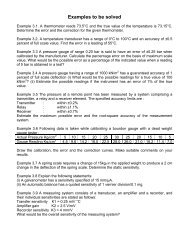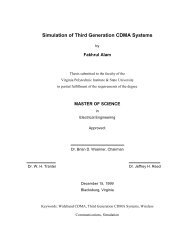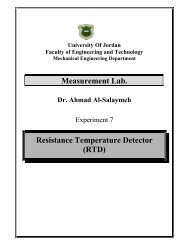Communications I Dr. Mohammed Hawa Introduction to Digital - FET
Communications I Dr. Mohammed Hawa Introduction to Digital - FET
Communications I Dr. Mohammed Hawa Introduction to Digital - FET
Create successful ePaper yourself
Turn your PDF publications into a flip-book with our unique Google optimized e-Paper software.
MLT-3 Code7. Manchester:There are two opposing conventions for the representation of Manchester codes:The first convention of these was first published by G. E. Thomas in 1949 and isfollowed by numerous authors (e.g., Andrew S. Tanenbaum). It specifies that for a 0bit the signal levels will be Low-High with a low level in the first half of the bitperiod, and a high level in the second half (see figure below). For a 1 bit the signallevels will be High-Low.The second convention is also followed by numerous authors (e.g., Stallings) as wellas by IEEE 802.4 and IEEE 802.3 (Ethernet 10 Mbps 10Base-T) standards. It statesthat a logic 0 is represented by a High-Low signal sequence and a logic 1 isrepresented by a Low-High signal sequence.If a Manchester encoded signal gets inverted somewhere along the communicationpath, it transforms from one variant <strong>to</strong> another. In this article, we will adopt the firstconvention (see figure below).Manchester Code 11In a Manchester code each bit of data is signified by at least one transition.Manchester encoding is therefore considered <strong>to</strong> be self-clocking, allowing anaccurate clock recovery from the data stream. In addition, the DC component of theencoded signal is zero.11 Manchester is always polar not unipolar.14
















